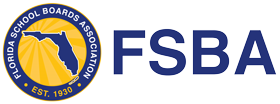Ann MacFarlane, a longtime observer of civic and nonprofit boards, has seen some interesting “hands on” approaches in school boards across the country.
Some examples:
- A board member who is a CPA decided that he was not satisfied with the district’s financials, so he prepared his own version for the board to approve.
- A school board member who believes ardently in the importance of good process decided that the bylaws were inadequate and over the weekend wrote her own and asked the board to adopt it.
- A physician believed that the staff was not being creative enough in envisioning ways to use some newly acquired space, so he recruited an architect friend to prepare a proposal to be presented to the board for consideration.
As the saying goes, “What’s wrong with this picture?” These are dedicated professionals who care enormously about the districts they serve. However, by their actions it would appear that they are confused about the scope of their duties. Simply put, a person elected to a school is charged with guiding and governing the work of the district, not actually doing it.
When interest in a task propels us into excessive involvement, we’re liable to create very serious problems. The examples above are clear cut, but the same issues crop up over and over again, in more subtle ways. For example, does a school board really want to decide who should coach a football team? Is the superintendent regularly offered unsolicited advice about principal assignments or transfers of teachers? It requires wisdom and detachment to make suggestions without meddling and to present clear thinking in ways that assist rather than hinder the work to be done.
When a school board commits to this position, the rewards are enormous. Each part of the team is able to perform its duty, and the overall organization functions well.
Thank you to Ann MacFarlane for this contribution.







